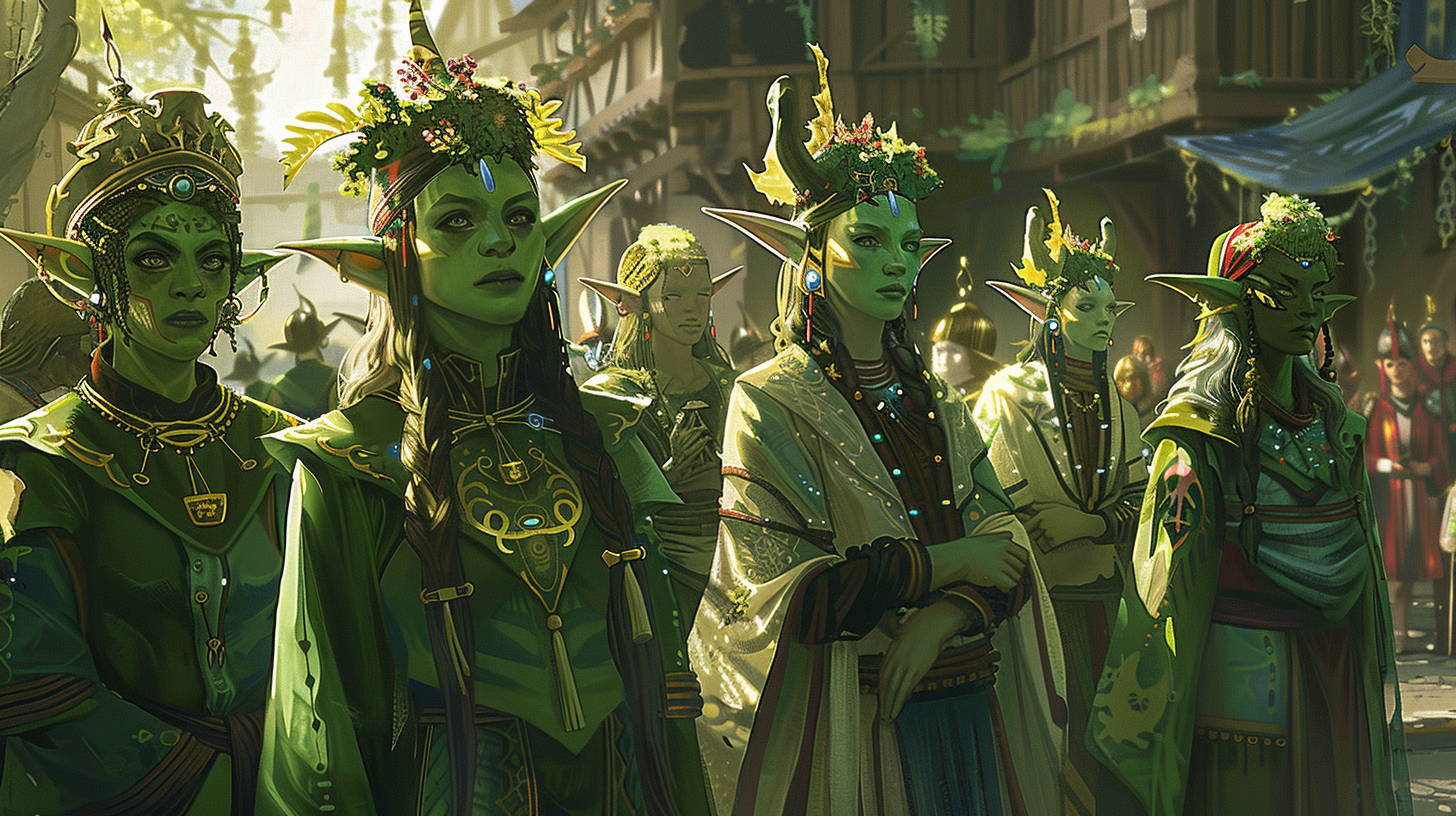Dun
Duns were green-skinned plant people, slightly taller than humans on average. They were recognizable by their leafy green skin. They had large, pointed, outward facing ears parallel with the horizon, and grass-like hair of varying "leaf thickness".
Duns had an average lifespan of 150 years.
Also see: Half-Duns

Appearance #
Duns typically had green skin (except in rare cases). They were strongly humanoid in appearance, with two arms and two legs, each with five digits (and opposable thumbs on the hands).
The facial structure of duns was also similar to humans, although generally duns had sunken cheeks and more angular facial features. Dun noses were also strongly upturned. Lastly, the ears of a dun were wide and pointed, with some ears reaching up to 15 centimeters in length.
Biology #
Phototrophic #
Duns were capable of limited autotrophy--they can go for days without eating real food thanks to their ability to absorb energy from light (photosynthesis). Additionally, they were aerotolerant anaerobes; while humans had to breathe oxygen, duns breathed carbon dioxide.
Dun skin cells were filled with a mixture of phycoerythrin, phycocyanin, chlorophyll, and carotenoids, allowing them to absorb an exceptional range of light wavelengths. The prevalent pigment was beta-chlorophyll, leading to their green appearance. Their blood was yellow from a high concentration of phycoerythrin. This allowed duns to absorb light of higher wavelength that may have penetrated deeper into the skin while shorter wavelength light was absorbed by beta-chlorophyll at the epidermis.
Some duns, like the Hero of the Archangel Marack, were born with genetic defects that altered the composition of photosynthetic pigments in the cells. While this may only have a very small impact on their actual photosynthetic ability, the biggest change is their skin colour, which could range from a stark purple to blood red. ^dnclr
Strong Immunity #
Duns had stronger immune systems than humans, allowing them to survive or outright ignore diseases that were typically of high mortality.
There was a common misconception that duns had rapid regeneration--this was untrue, and likely stemmed from the duns' ability to suffer severe injury without infection.
Dunbark #
Duns grew formations on their skin similar to how humans grew body hair. Dun skin was usually soft and felts identical to humans', but they grew a type of bark on their outer forearms, front of the shins, and (in males) on the chest. Referred to as dunbark, these growths helped early civilization duns by providing a form of innate armour which protected them from wildlife and enemies. As dun societies grew more advanced, many duns opted to shave portions of these growths off (which was as painless as it was for a human to shave their hair) in order to take on a more refined, clean-cut appearance.
Sexual Dimorphism #
Adult male duns grew wood-like horns almost akin to antlers from their heads. Similar to bodily dunbark, some duns chose to whittle these down for a more sophisticated appearance. Some duns were incapable of growing these horns, or lost the ability to with age.
Female duns had flowers bloom in their hair when fertile. The colour and shape of these flowers was related to genetics and was unique between individuals.
Civilization and Culture #
Before the Demon Wars, duns primarily occupied the central region of Hohm. The duns would congregate under the banner of Nungul, and Gunkol after it. However, they would be displaced during the Mundane War and Demon Wars, becoming nomadic people who called all of Legere their home.